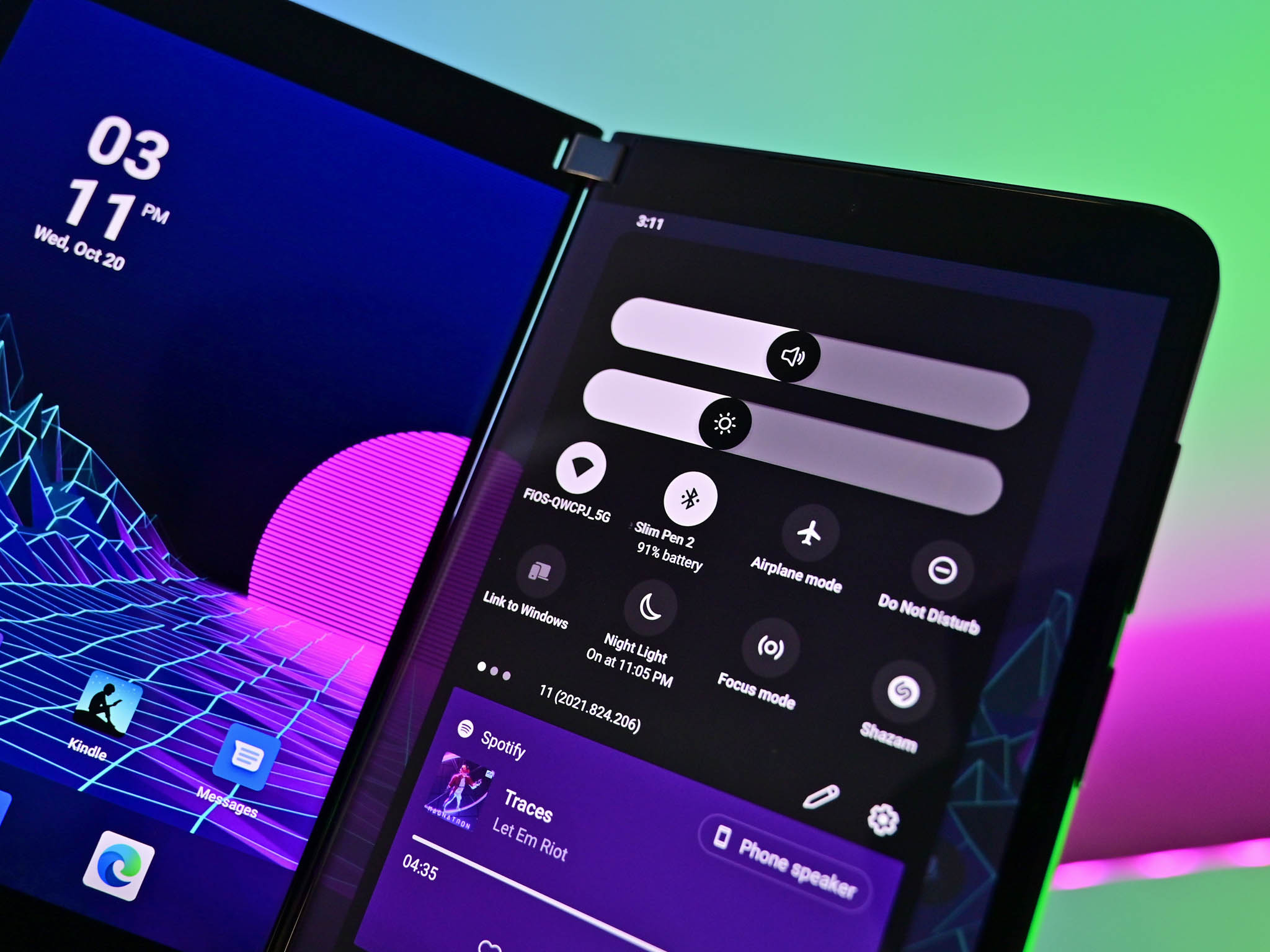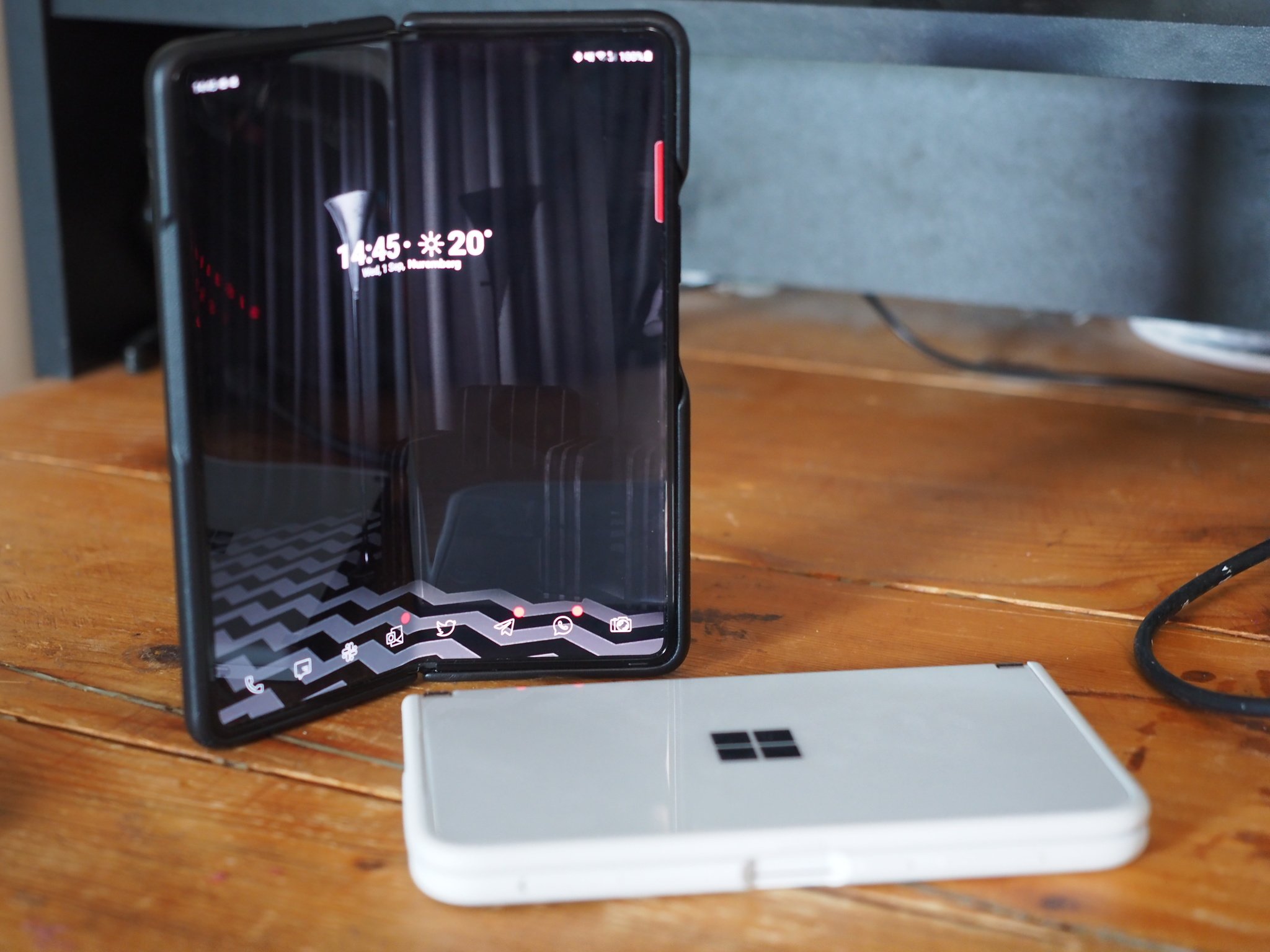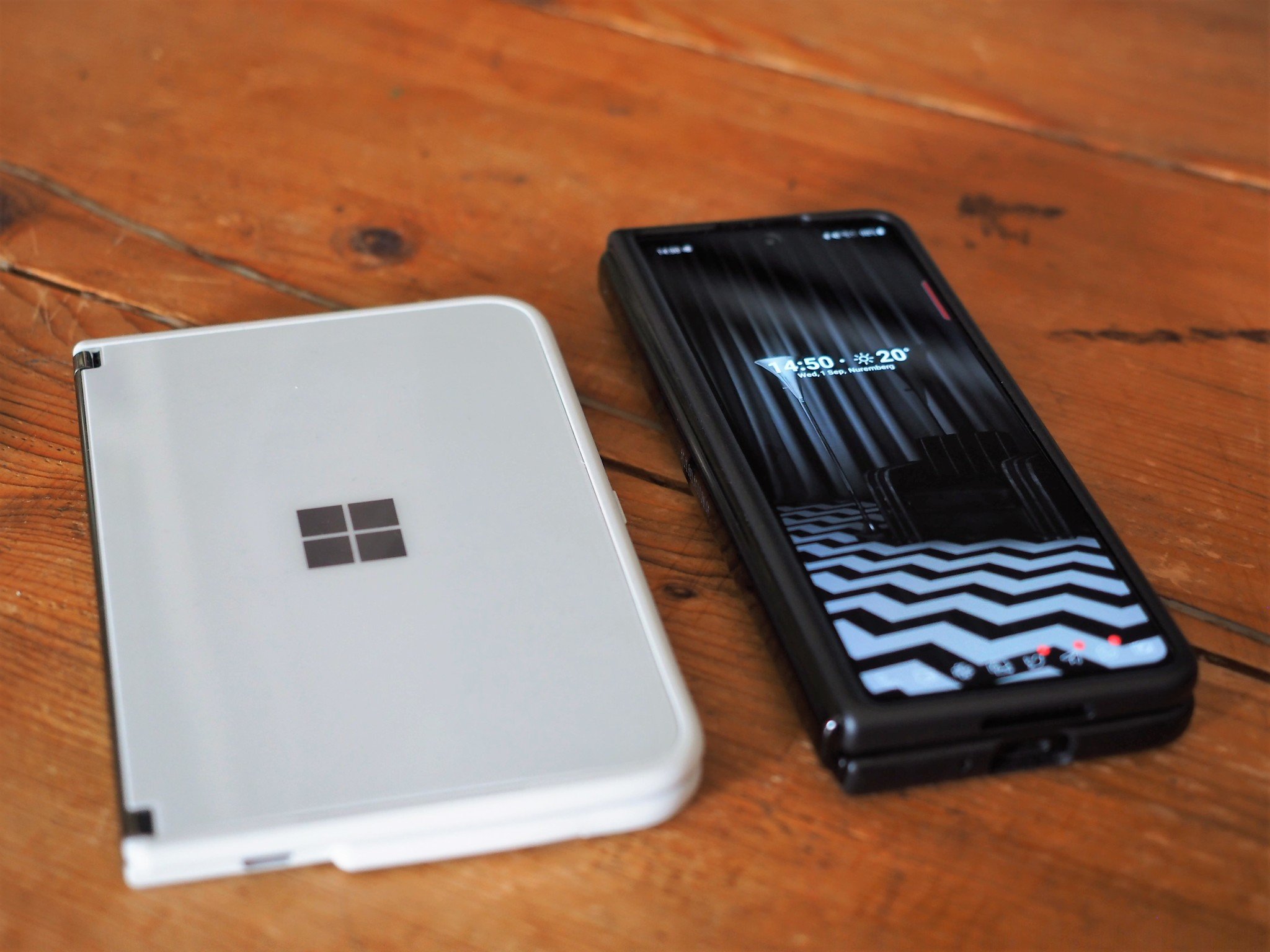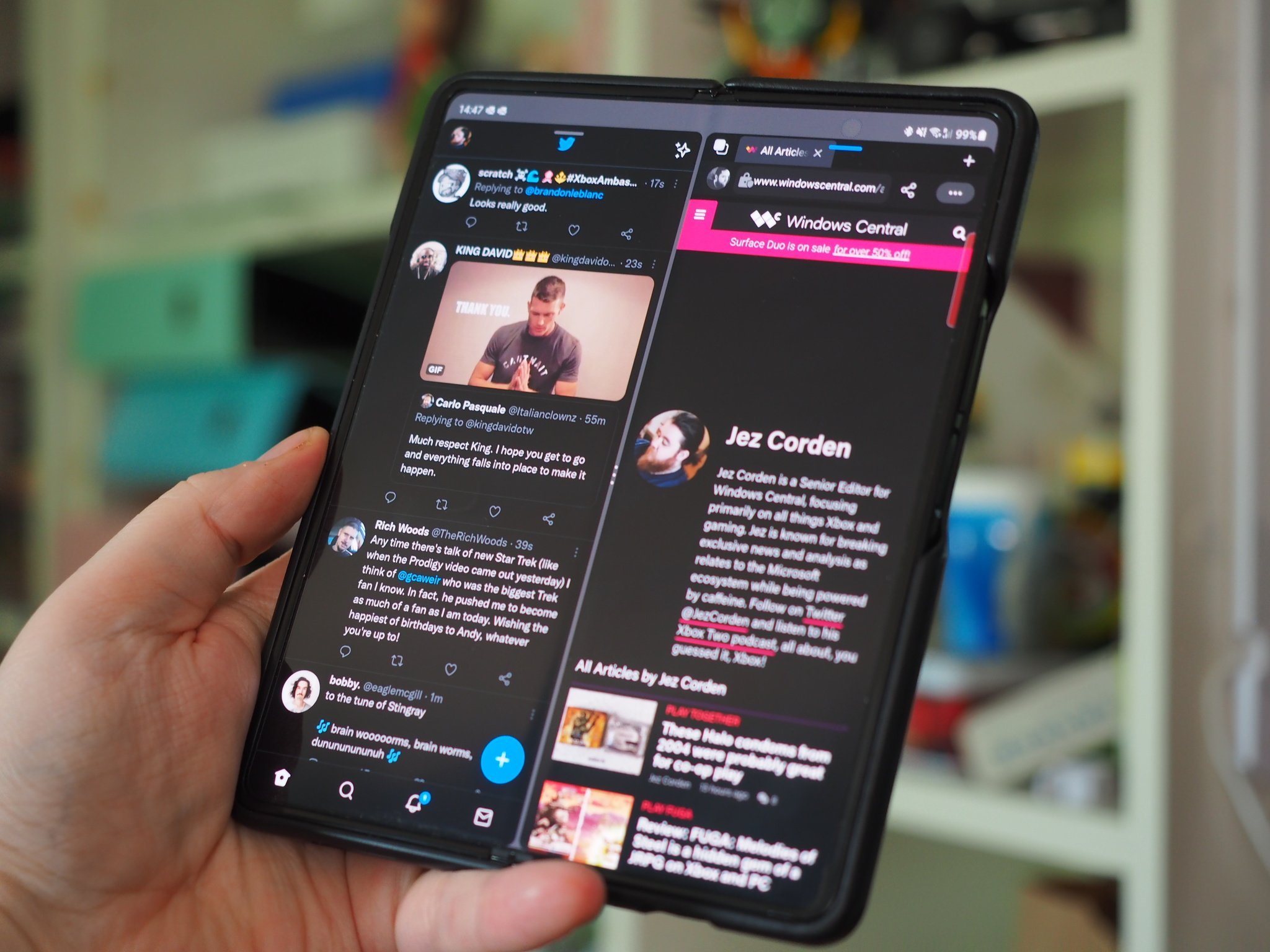I want *to want* a Surface Duo 2, but Microsoft isn't making it easy
The Microsoft Surface Duo 2 has received another round of mixed reviews. Can Microsoft ever get it right?


I am sold on the idea of folding phones, that much is true. I've tried the Surface Duo 1, and I recently wrote about how, ironically, the Surface Duo 1 made me go out and grab a Samsung Galaxy Fold 3. Why? Because Microsoft has shown time, and time again, that it cannot execute software. This is a wild thing to write given the fact that Microsoft is very much known for its software.
Our executive editor Daniel Rubino recently put out our full Surface Duo 2 review, explaining that while it's a massive improvement on the original, it's still not quite there yet. I was very almost considering selling off my Galaxy Fold 3 to grab a Surface Duo 2, but the reviews ultimately swayed me otherwise.
After using the Galaxy Fold 3 for a few months now, it's apparent that the Duo 2 hardware may actually be preferable for me as a multi-tasking-oriented device. I think Microsoft (and Samsung, for that matter) are entirely on the right track with these devices. And sure, they may never be the mainstream form factor people want, but for certain types of users, they take the concept of a smartphone to the next level. The problem is, right now, I know that Samsung is able to deliver in those crucial places where Microsoft simply, well, can't.
Why is that? And can it ever be solved? Or are we once again at the precipice of another Windows Phone-style disaster scenario?
Where the Duo beats the Fold
I'm a heavy phone user, spending several hours a day glued to this rectangular hell portal we call the internet. Judgments of my life choices aside, at the very least I can bring you an in-depth perspective of both devices put head to head.
The Duo 2 has Corning Gorilla Glass. The Samsung Galaxy Fold 3 has a plastic outer layer and a micro-thin flexible glass layer underneath. I shouldn't have to go deeper than that to explain which device is sturdier.
My Galaxy Fold 3 has picked up scuffs, bumps, and scrapes just from sharing a pocket with a loose coin. This phone is just so damn fragile, and it's annoying having to carry this phone around with a painstaking fear of it spontaneously combusting. I haven't had a phone this fragile, like, maybe ever. My friend's Nokia Lumia 920 survived a fall from a multi-story car park relatively unscathed. With the Galaxy Fold 3, I'm worried I'll shatter the screen if I look at it the wrong way.
All the latest news, reviews, and guides for Windows and Xbox diehards.
There's also been plenty of criticism leveraged at the Surface Duo's multi-screen setup, with people calling it impractical or unintuitive. And sure, at first, it's a bit tough to adapt years of mental training for how phones work. It's harder still if you're not someone who would use those kinds of features often. I am, however, a chronic phone addict. Being able to side-by-side Reddit and Telegram is great for me, and it's something I do frequently on the Galaxy Fold. Ironically, though, the Duo 1 was arguably better at it.
The Duo software gives you more control over how and where links open. Since it knows and expects two specific regions of the phone where apps can open and interact with each other. The Fold 3 method is an extension of Samsung's built-in multitasking feature. The virtual screens work in silos, and can't interact with each other easily. If I open a link in Telegram, I want it to open up separately to the conversation I'm having. On the Fold 3, it opens in the same panel every time, which defeats the point of multi-tasking scenarios for me. On the Duo, it will try to more intelligently open links on the screen you're currently not using.
The problem is ... Microsoft removed this functionality on the Duo 2, which is maddeningly confusing. The Duo 1 even had a cool animation when you opened a link, shifting the content onto the unused screen. Is Microsoft even testing their own phones? And no, I won't leave a report in the Feedback Hub. How about testing your own devices, Mr. Trillion Dollar Company?
Does the Surface Duo have enough investment?

The thing that makes the Surface line so unreliable for me is the inconsistent support. We're still a year into the Surface Duo 1 not having the promised Android 11 update. The Surface Duo 2 shipped with weird animation bugs that Microsoft itself said would be fixed by launch, yet they are still broken. The Surface team doesn't communicate very well either, which is not a great way to build up a community around the devices. Your early adopters are your front line of marketing, and if you can't give them a good experience, how do you hope to entertain the masses?
The Galaxy Fold also has the benefit of a much larger team, already working with a far more mature OS. For what it lacks in good multitasking features, the Galaxy Fold 3 makes up for it with a wealth of expected features like wireless charging, a non-Google payment alternative system, its own app store, full theming, and skinning options, and much more. The Duo 2 barely reaches beyond stock Android. We do now have a non-Google photos app through a new OneDrive feature, and a more robust camera experience, but it's nowhere near enough.
The problem with the Surface Duo, as I've argued before, could be a lack of investment. For Samsung, Galaxy is its bread and butter, so you might expect it to get more serious backing. The Surface Duo feels like a side project, within a side project, which is not exactly reassuring. Sure, it's a multi-billion dollar side project, but when Microsoft can't even land the basics at launch, I'm left feeling how I felt when I unwrapped the Lumia 950 XL, with half-baked software, rammed with bugs and unfinished features. Unlike the Lumia 950 XL, though, the Surface Duo 2 is $1,500. 1,500. Dollars.
Hey @VishnuNath, my retail Surface Duo 2 with all the latest updates still doesn't have any animations when opening apps. Any insight?Hey @VishnuNath, my retail Surface Duo 2 with all the latest updates still doesn't have any animations when opening apps. Any insight?— Zac Bowden (@zacbowden) October 21, 2021October 21, 2021
You could argue that the price is so high to offset the costs of R&D. That hinge system is by no means simple, and would've been incredibly costly not only to develop but also manufacture. You could also argue that, because the Duo is pure hardware, with no software upsell like a Galaxy Store or a Google Play Store, Microsoft needs these types of prices to keep the dual-screen Duo even vaguely profitable.
Those are business considerations, though. As an end-user, even as a tech enthusiast and a frequent early adopter, I'm left wondering whether Microsoft is actually serious about the Duo line, or if it's some kind of vanity project that will die in the same drawer as Razer's ill-fated phone line.
Can Microsoft fix this?
Microsoft doesn't have a good history with phones, for various obvious reasons. They've also failed to make a good first, and now second impression with the Duo lineup, with many YouTubers and tech reviewers lining up to bash it. Even the heaviest Microsoft apologists likely have bad memories of Windows 10 Mobile fresh in their minds, left wondering if, indeed, Microsoft is serious this time around.
I desperately want to believe that like the Surface Pro, the third time may be the charm.
Folding phones may not be how the mainstream wants to use their devices, but dangit, it's how I want to use my devices. I want seamless multitasking. I want the boosted screen real estate. I want the big-screen media experience. And I want inking capabilities. I also just love the uniqueness of the thing. Phones used to be fun, and foldables make them fun once again for me, in a world of relentless iPhone copycats. The Duo fails to put the fun in fundamentals though, given that it misses the mark in far too many ways for a $1,500 handset. The battery life, camera performance, and software quality are nowhere near where it needs to be.
The Surface Duo 2 like its predecessor is a vision of a truly amazing phone, gradually coming into focus. It reminds me of the Surface Pro line in a lot of ways. It wasn't until the Surface Pro 3 that Microsoft truly nailed that form factor and changed tablet computing forever along with it. I desperately want to believe that like the Surface Pro, the third time may be the charm.

Jez Corden is the Executive Editor at Windows Central, focusing primarily on all things Xbox and gaming. Jez is known for breaking exclusive news and analysis as relates to the Microsoft ecosystem while being powered by tea. Follow on Twitter (X) and tune in to the XB2 Podcast, all about, you guessed it, Xbox!




